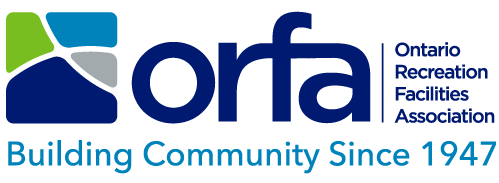- ORFA Home
- The Recreation Facility Profession
- ORFA News and Alerts
- ALERT - May 31, 2022
ORFA ALERT |
ORFA Recommends the Need to Evaluate Ball Park Facilities For Spectator Safety
May 31, 2022 Action: Where appropriate, the ORFA recommends JHSC agenda item and H&S Bulletin Board PostingBackground The Ontario Recreation Facilities Association (ORFA) Arena Boards, Shielding and Protective Netting (BSPN) Systems guideline was released in October 2002 to assist facility managers in planning, designing, and installing shielding and dasherboard measurements and designs so that a common installation might standardize the field of play for ice rinks. While the resource was under construction, the death of 13-year-old Brittanie Cecil in March 2002 at a Columbus, Blue Jacket National Hockey League game reinforced the need for a safe ice sheet work and play environment. The National Hockey League made protective netting mandatory for all professional ice venues and many Canadian rink operations responded by voluntarily installing safety netting as part of their efforts to help protect spectators from objects that may leave the ice surface. There was much discussion and some pushback by both facility owners and patrons in community rinks as they struggled with a change in sight lines and viewing pleasure. The evaluation of an ice rink boards and glass system, along with safety netting options remains an ORFA strongly recommended industry best practice with no legal requirement to retrofit any community rink building with such protection. Sports Field and Ball Park Implications The potential risk of injury from foul balls, bats or other projectiles in sports fields is well documented and has a similar history as ice rink facilities. In response, Major League Baseball teams are installing netting that protects fans from these risks after a grandmother celebrating her 79th birthday in 2018 at Dodgers Stadium in Los Angeles died after being hit in the head by a foul ball. The death prompted an investigation that found at least 808 reports of injuries to fans from baseballs from 2012 to 2019. The injuries include concussions and permanent vision loss. Most of the injuries resulted from fouls, while some were reported from home runs and batting practice. In other cases, fans were injured as they scrambled to catch balls flying into the stands. Legal and Risk Implications The ORFA continues to promote that all member operational decisions must be based on the described “duty” under the Occupiers Liability Act. Occupier’s duty Being hit by an object as a spectator at any sporting event no longer meets the legal threshold of “risks willingly assumed” under the Occupiers Liability Act.
Recommendation Effectively immediately, the ORFA is adopting the same definition as rinks for spectator protection for sports fields and ball parks and the need to evaluate these facilities for risk is strongly recommended.
As with ice rink design variables, it is difficult to provide a spectator protective safety plan that will meet every venue needs. Facility managers will need to work closely with engineers, suppliers, insurance risk professionals and industry leaders in designing a spectator safety system that will be satisfactory for each location. Once in place, a system of inspection, maintenance, repair, or replacement must also be developed that aligns with other operational risk management tools. Providing safe recreation facilities through leadership for both work and play continues to be part of the ORFA’s vision and mission.
|

